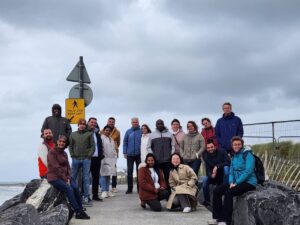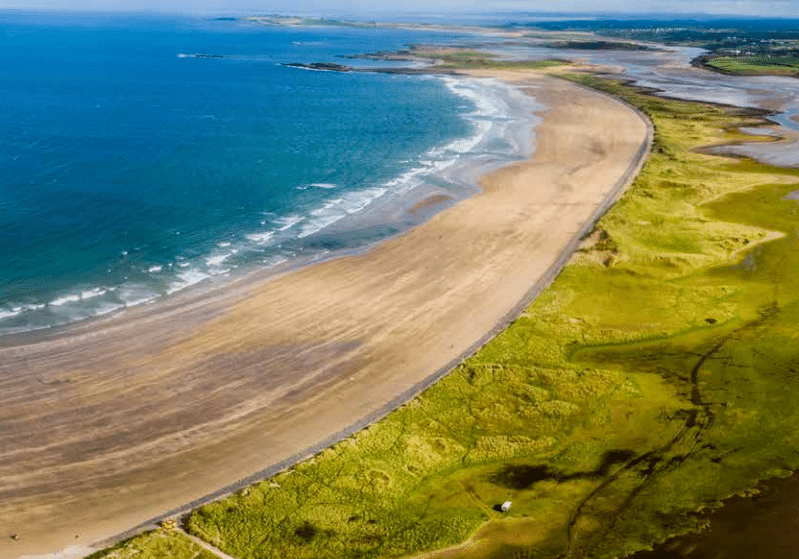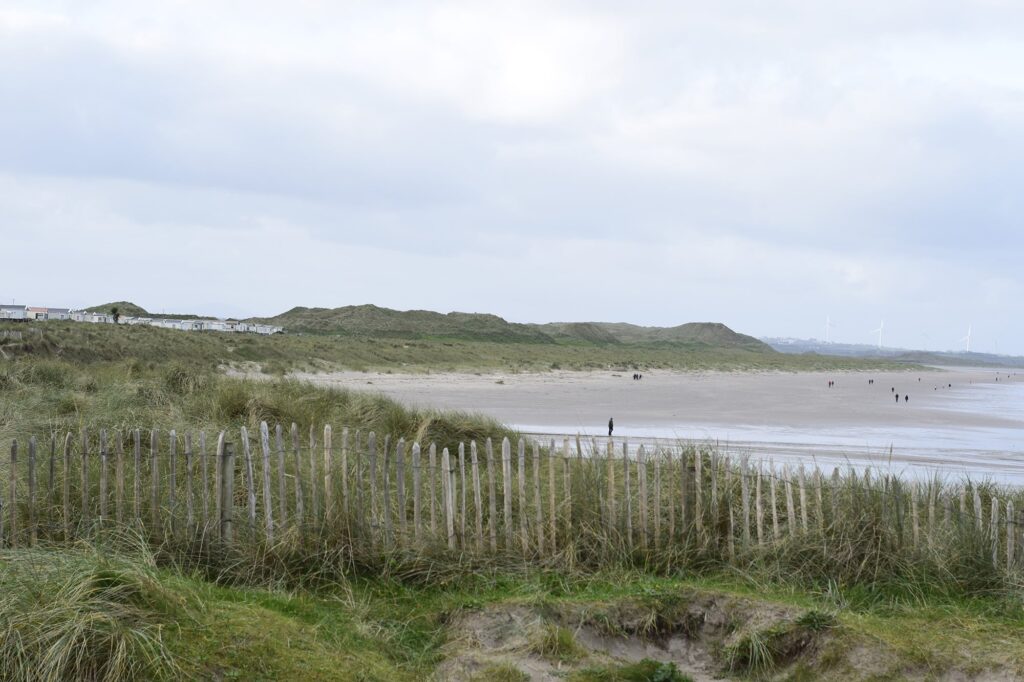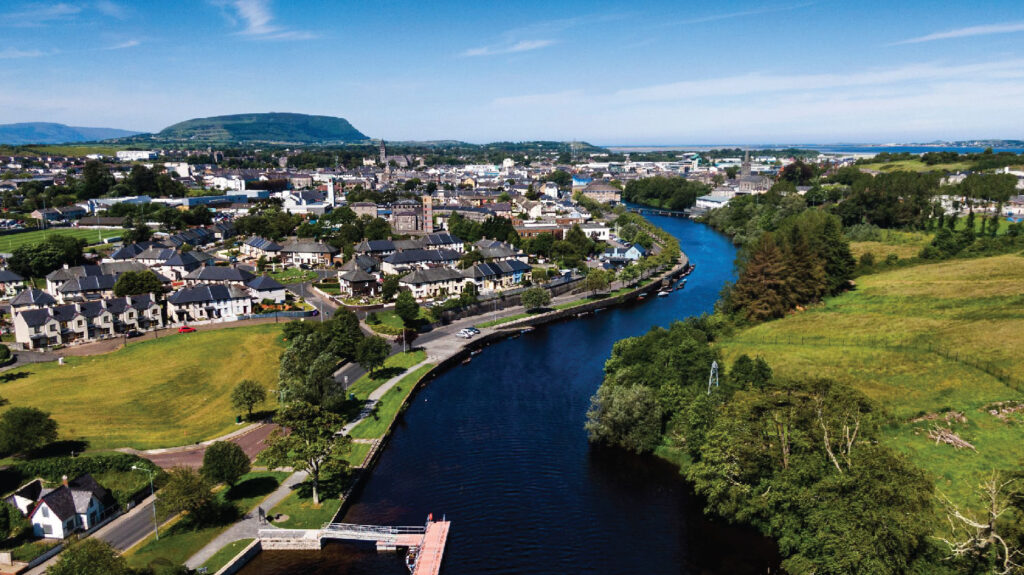Introduction
The Sligo Living Lab (LL), developed under the Horizon Europe PRO-CLIMATE project and building upon the work initiated through the H2020 SCORE project, functions as a real-world platform for climate adaptation in a vulnerable coastal region of Ireland. It brings together scientific tools, participatory methods, and behavioural approaches to co-create responses to mounting climate risks affecting both urban and rural communities in County Sligo.
Situated on Ireland’s Atlantic seaboard, Sligo is increasingly affected by sea-level rise, pluvial and coastal flooding, storm surges, and the erosion of sensitive coastal zones. These environmental challenges are compounded by infrastructural ageing, spatial planning constraints, and limited public engagement with climate adaptation. The LL addresses these issues by integrating low-cost environmental sensors, digital twin modelling, and structured community participation, ensuring that interventions are evidence-based and context-sensitive.
The Sligo LL is supported by Atlantic Technological University (ATU), in close collaboration with Sligo County Council. It operates through a multi-actor framework grounded in the Quadruple Helix Model, engaging local authorities, researchers, civil society, private sector actors, and communities – including youth and residents of high-risk areas. The LL fosters collaboration across technical, institutional, and social domains to shape inclusive and adaptive responses.
Key Contextual Challenges in the Sligo Living Lab
Environmental pressures
➚ Sea-level rise and storm surges increasingly affect low-lying areas such as Strandhill and Easkey.
➚ More frequent flooding, erosion, and landslides linked to climate variability.
➚ Degradation of coastal dune systems and wetlands, threatening biodiversity.
Socio-Economic Dynamics
➚ Regional dependence on agriculture and tourism leaves the local economy exposed to climate shocks.
➚ Rural dispersion and ageing population make sustained engagement more complex.
➚ Limited technical capacity constrains long-term climate planning at community level.
Governance Constraints
➚ Fragmented institutional responsibilities and lack of specific adaptation mandates at county level.
➚ Need for stronger coordination between Sligo County Council, environmental agencies, and local actors.
➚ Gaps in mainstreaming adaptation across sectors and planning frameworks.
Despite these challenges, Sligo possesses notable assets that support resilience-building. Environmental NGOs, community groups, and academic institutions (including Atlantic Technological University (ATU) Sligo) have actively contributed to coastal restoration, local monitoring initiatives, and participatory research. The Smart EARTH Innovation Hub and the Digital Twin initiative provide a strong foundation for using low-cost sensor networks and real-time data in local decision-making. These innovations, coupled with established relationships with Sligo County Council and national bodies such as the OPW and Geological Survey Ireland, create an enabling environment for adaptive action.
This diagnostic phase, informed by stakeholder interviews, workshops, and document review, has highlighted priority action areas such as flood management, coastal protection, and the integration of ecosystem-based adaptation (EBA) practices. These findings will guide the co-design of the Sligo LL’s pilot interventions.
Opportunities for Systemic Change
The contextual analysis points to four key leverage points for enabling systemic change in the Sligo Living Lab:
- Community-Led Ecosystem-Based Adaptation (EBA): The LL builds on grassroots experience in dune restoration, afforestation, and local monitoring. Formalising these efforts within governance structures, supported by targeted funding, can scale their impact and serve as models for replication in other coastal regions.
- Participatory Governance and Multi-Actor Collaboration: Co-led by Sligo County Council and ATU, the LL facilitates collaboration between public authorities, researchers, and community stakeholders. Strengthening this platform and broadening participation—particularly from farmers, fishers, and younger residents—can improve trust, representation, and decision-making quality.
- Smart Monitoring and Data-Driven Planning: The use of sensor technology and data visualisation tools (such as the Digital Twin) enables evidence-based responses to coastal erosion, flooding, and biodiversity threats. Expanding these tools in cooperation with agencies like OPW and the Geological Survey of Ireland will improve the precision and relevance of local adaptation strategies.
- Policy Integration and Sustainable Resourcing: Aligning LL interventions with national policies such as the Climate Action Plan, and accessing resources via CARO and regional planning mechanisms, supports long-term continuity. Embedding the Living Lab model within county-level planning documents will help mainstream adaptation efforts and institutionalise nature-based solutions.
Together, these opportunities position the Sligo LL as a place-based mechanism for testing and refining systemic climate adaptation approaches, rooted in both scientific evidence and community knowledge.
Stakeholder Landscape and Roles
The stakeholder landscape in Sligo is characterised by a combination of formal institutions responsible for climate governance and a wide array of informal actors whose local knowledge and place-based experience are vital to the success of adaptation efforts.
Sligo County Council holds the principal coordinating role, overseeing local climate action and working closely with national entities such as the Office of Public Works (OPW), the National Parks and Wildlife Service (NPWS), the Environmental Protection Agency (EPA), and the Climate Action Regional Office (CARO). These institutions provide policy direction, regulatory oversight, and access to technical expertise and funding.
Academic partners, particularly Atlantic Technological University (ATU) and associated research institutes, support data collection, environmental monitoring, and the use of smart tools, such as sensor networks and digital twins. Their collaboration with the local government enhances knowledge exchange and informs decision-making.
Civil society is represented by environmental groups such as Clean Coasts, local volunteer associations, and place-based initiatives. These actors facilitate outreach, raise awareness, and ensure grassroots concerns are channelled into formal planning processes. Their role has proven essential in maintaining trust and ensuring that communication strategies remain accessible and inclusive.
Landowners, residents, farming communities (including the Irish Farmers’ Association – IFA), and coastal tourism operators are among the directly affected stakeholders. They are central to both the co-design and implementation of adaptation measures, particularly those concerning land use, resource management, and public safety in the face of coastal hazards.
Relevant news items

ATU Sligo Highlights Climate Awareness at Climate Action Week Quiz Night
On 13th October 2025, Atlantic Technological University (ATU) Sligo marked Climate Action Week by integrating a dedicated climate-themed round into its annual Maths Week Quiz

Local Stakeholders in Sligo Join Forces to Build a Climate-Resilient Coastal Future
Sligo, Ireland: A diverse group of community members, researchers, and local officials convened recently in Grange, County Sligo, as part of the PRO-CLIMATE project to

Sligo Living Lab Workshop (September 2024)
Sligo Living Lab Workshop Fosters Collaborative Solutions to Local Climate Challenges Sligo, Ireland – September 5, 2024. – The Sligo Living Lab successfully hosted its

Second PRO-CLIMATE project meeting @Sligo, Ireland
The 2nd PRO-CLIMATE project meeting was hosted by our partners at Atlantic Technological University (ATU). PRO-CLIMATE consortium gathered to review the progress of the work



